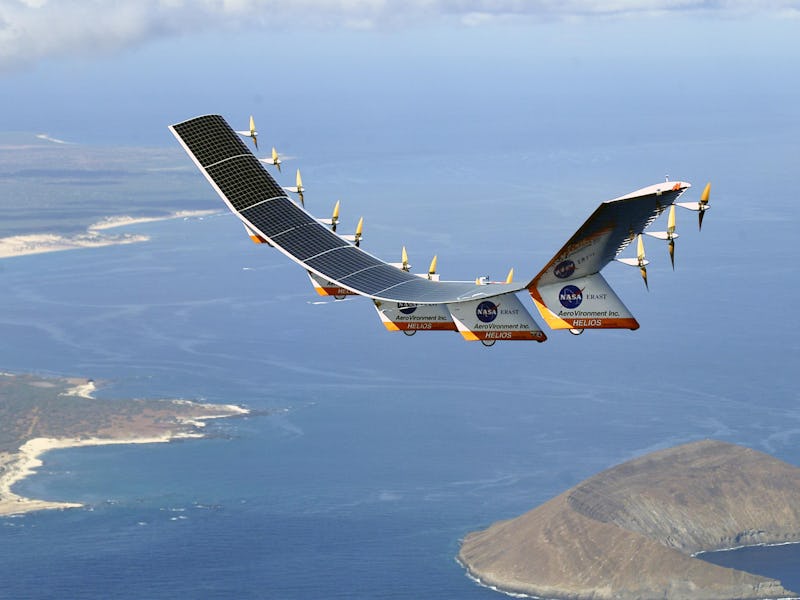How Drones Could Shape the Next Generation of Solar Power Cells
Their relatively short flying time makes them the perfect testing ground.

Sam Stranks and his team at the University of Cambridge hope they’re on the brink of a revolution in solar technology. For decades, silicon has been the most popular material used to make solar power cells, successfully moving solar from alternative energy into the mainstream. But it’s not a perfect material: It’s heavy and rigid, limiting its potential uses, not to mention it’s expensive to produce.
That’s where Stranks hope a common mineral called perovskite can change the game for solar energy. “Perovskite has the potential to be a very low-cost replacement for silicon,” he tells Inverse. “You can do a lot more with these perovskites than you can do with silicon. It opens up a whole new range of applications.”
Its flexibility and light weight mean perovskite could turn the solar roof market into one for solar tarps, but Stranks sets his sights higher — literally.
“The lightweight flexible applications open up powering drones, powering flying vehicles, aerial vehicles,” he says. Crucially, putting perovskites on such craft could provide the ideal scenario for testing this next generation of solar cells. The future of perovskite cells — and, with it, solar power in general — could run through drones.
“The exciting thing about these drones is the lifetime that would be required for the solar panel is shorter,” says Stranks. While solar-powered drones are planned to fly for months at a time, that’s still a fraction of the 30 years that something like a solar roof would require. “So in the short term, before we can prove the long-term stability, that could be very good. That could be a very exciting application for the perovskites.”
As he and his colleagues at Cambridge and other institutions detailed last week in the inaugural issue of the journal Joule, they have solved one of the biggest engineering hurdles to making perovskite a practical reality for solar power. The mineral counts all silicon’s weaknesses among its strengths.
Facebook's Aquila drone takes off in 2016
The drones Stranks has in mind are those like Facebook’s massive, solar-powered Aquila, which had its first test flight in June 2016. The drone is intended to stay in the air for months at a time, bringing internet connections to the 2 billion people who don’t otherwise have access. Both the United States’ and China’s government are working on similar drone technology, with China’s CH-T4 reaching heights of 65,000 feet in a test flight this June.
These are much bigger drones than their commercially available counterparts or the ones companies like Amazon are developing for delivery systems. Stranks says that size makes such drones — those both solar-powered and otherwise — the perfect test cases for perovskite cells.
“We’re talking half a ton in terms of weight so that they could potentially be powered by solar,” says Stranks. “But a lot of the cells they’re using for those are very, very expensive. They’re very high-quality cells, but we think with perovskite we can replace them with much, much cheaper versions, and then that could start bringing down the price of running these drones as well.”
The Titan drone was beautiful, but it didn't make it.
There could be serious potential there, especially when you consider some of these drone projects have already been scrapped amid feasibility concerns. Titan Aerospace spent years developing a drone similar to Aquila before being purchased by Google in 2014 and absorbed into the company’s special projects division. Titan was ultimately scrapped in January of this year. No clear reason was given, but company representative Jacquelyn Miller indicated the economics and technical feasibility of other projects were more encouraging.
There’s no way to know whether perovskite cells could have made the difference for Project Titan specifically, which could have fallen victim to any number of other factors in the design process. But if the current status quo for solar energy and drones has already proven too dicey for a company like Google, there’s room to think a new breed of cells could make a serious impact as other companies and governments keep working on these massive, solar-powered drones. After last week’s paper, perovskite has taken a big step closer to fitting that particular bill.
If you liked this article, check out this video on Super Bowl drones.